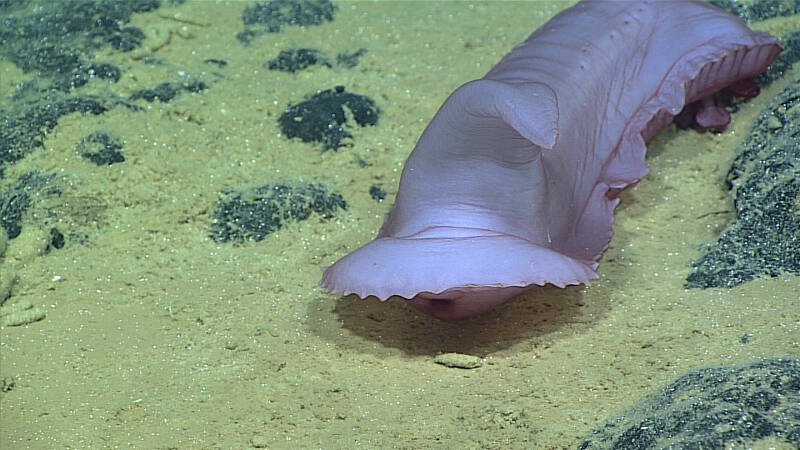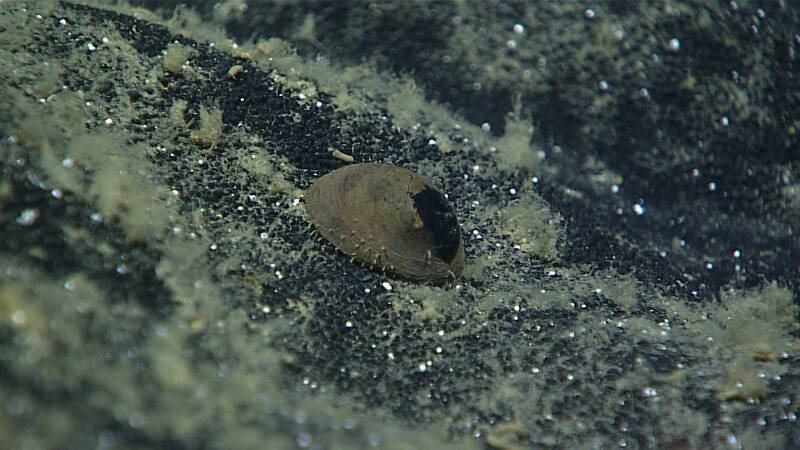This was the deepest dive for the expedition, descending to 5,862 meters in a deep trough feature, southwest of the Phoenix Islands. The seafloor was composed of scattered and emplaced rocks coated in manganese iron oxide crust, with brown sediment drape occurring in patches. The sediment appeared more organic rich and darker in color than on the previous dives in the region, speckled with calcareous foram tests. A common theme throughout the dive was the lack of color, both on the steep slope and sedimented ledge at the end of the dive. Much of the taxa lacked tissue pigmentation, which contrasted with the dark color of the seafloor. Scientists observed white anemones, sea cucumbers, brisingids (some with swollen arms indicative of ripe gonadal material), stalked sponges with amphipod associates, comatulid crinoids possibly with eggs, a solitary hydroid, slit shell gastropod, sea pigs, pentagonal brittle star, and a branching bryozoan. Other fauna observed included a large amphipod, red caridean shrimp, carnivorous tunicates, large pink mysid shrimps, fan-shaped xenophyophores, brown globe foraminiferans, a long mud tube with a white polychaete inside, and a cusk eel. Scientists observed some unexpected fauna, including priapulids feeding on the sediment surface, large purple sea cucumbers, and a rare monoplacophoran mollusc. At the end of the dive, along a sedimented plateau composed of hard pavement, was a white sea pen, and the scientists collected the only black coral observed on the dive around 5,775 meters depth. Tomorrow’s dive will be in the vicinity of Carondelet Reef on an unnamed seamount within the Phoenix Islands Protected Area.

